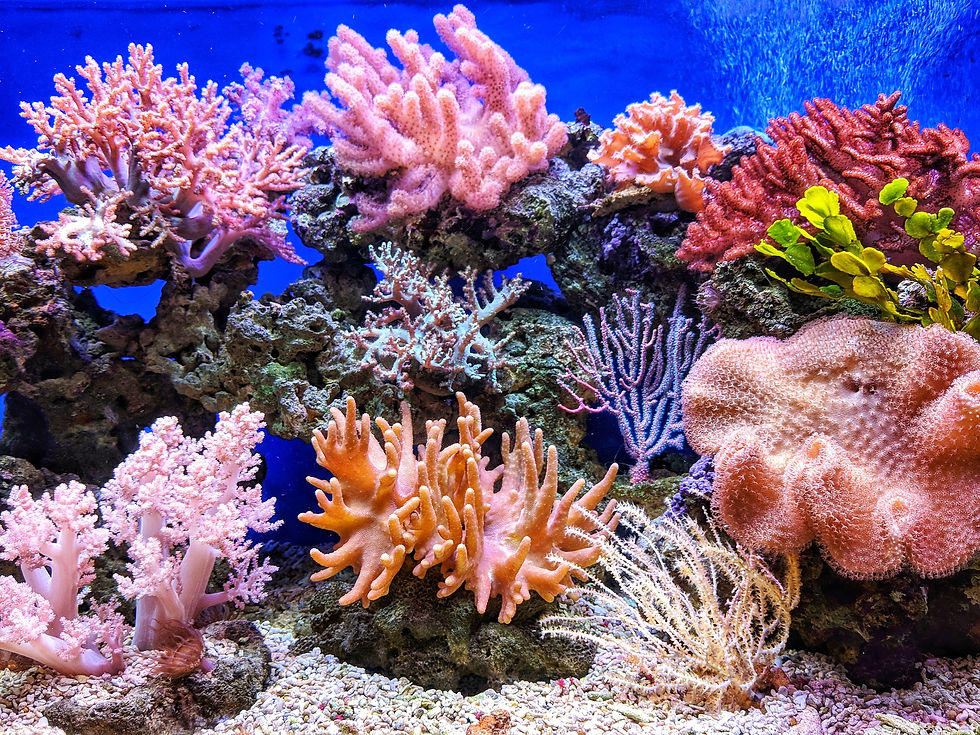Just Keep Recycling: How Can We Save Our Oceans From Fashion Pollution?
- Imogen Steel

- Jun 30, 2021
- 3 min read
Updated: Aug 16, 2021
The Fashion Industry’s Impact on the Environment
When talking about environmental impacts, we think about how fossil fuels are damaging our O-Zone layer. We think about how palm oil production is destroying our forests. We think about how plastic production is harming our oceans and wildlife.
These are all very important issues that have been faced in the recent years. Yet, the same can’t be said about the impacts the fashion industry is having on our environment. It has been estimated that the fashion industry alone makes 10% of total global emissions. The three main causes being dyeing and finishing, yarn preparation and fibre production; the last having the greatest effect on freshwater sources.
“The fashion industry is responsible for 20 percent of global wastewater” Emma Golley – Fashion and the Free
Although there are many different industries that impact the water sources, the fashion industry remains the second highest consumer of water. For example, producing one cotton t-shirt alone consumes c. 2,700 litres of water, which is equivalent to the amount of water one person can drink in 3 years!
This negatively impacts our oceans as it is slowly drying up our sources of freshwater. As well as this, the fashion industry is the second largest polluter of water via: toxic chemicals in the dyeing process, tanning process and microplastics. In China, 1/3 of their rivers are “too polluted for any direct human contact”, whilst toxic chemicals in Indian rivers have been linked to raised diseases in the area.
Our Fashion Impact on the Oceans
We also have a direct impact on our oceans through our choice of fashion, such as the common practice of choosing quantity over quality. If given £20 to spend on clothing, it would be more cost efficient to go to stores like Primark and buy a whole outfit, rather than spend it on one good quality item.
This fuels the negative impact fashion has on our environment. Cheaper clothing lasts less than higher quality items, whilst they also contain more microplastics. These have dangerous impacts on our oceans as they are too small to be filtered out.
An estimated 700,000 microfibres are released in every average wash cycle, with the main culprits being nylon, acrylic and polyester. These microfibres end up back in our own water systems and being consumed by marine life, resulting in plastic waste appearing in our water and food.
Another way we are adding to this issue is through the “Throwaway Culture” trend. Due to the impacts of fast-fashion, trends come and go faster than ever before, resulting in more outfits going ‘out of fashion’ and thrown away. Paired with the pressure to not wear the same outfit twice, this is contributing to the increasing amounts of textiles being dumped. An estimated 85% of textiles being dumped every year already! It is no surprise that specialists are predicting a 60% rise in textile waste by 2030.
What can we do?
Now that we have covered the main issues that are causing our oceans to be so polluted, it’s on us to decide how to protect our oceans. The main way we can impact this is by reusing and recycling clothes.
We can do this by being conscientious about where we buy our clothing, opting for circular fashion brands. These kinds of brands help tackle the amount of waste appearing in the oceans by ensuring clothes, accessories etc are all renewed and eco-friendly. Examples of circular fashion brands include MUD Jeans, Stella McCartney and BEEN London.
Another way we can reduce waste is by buying preloved clothing. There is a rising trend in vintage-looking outfits, with stores like Urban Outfitters attempting to replicate the look. Instead of spending extortionate amounts of money, opt for the real vintage items! By doing this, you’ll be reusing clothes that already exist whilst also saving money.
The best places to look for vintage clothing are charity shops, such as Oxfam, or websites like Vinted. Shopping at these kind of stores will reduce the negative impact fashion has on our oceans whilst allowing you to contribute funds to smaller companies and charities.
Other ways we can do our part to save our Oceans:
Buy better quality clothing
Swap clothing with others
Donate to charity shops
Buy less
Be efficient when washing your clothes



Comments